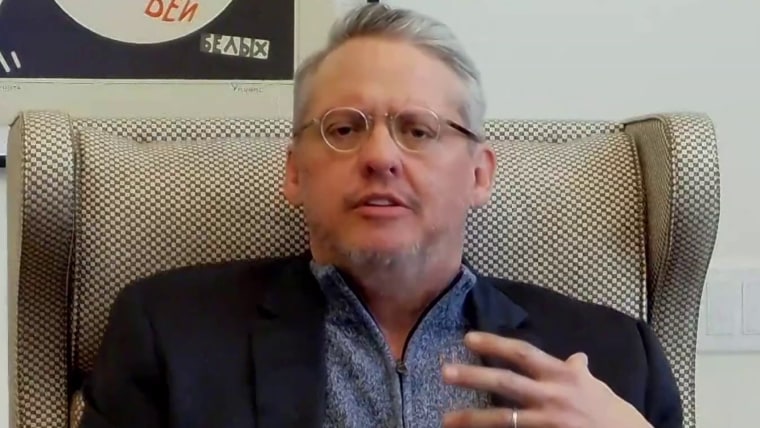From wildfires to sea level rise and heat waves, climate change is having a dramatic impact on the environment and people’s health and well-being.
So what can the world do about it?
That’s the focus of the third and final report — released Monday — from a recent cycle of climate discussions among scientists with the United Nations’ Intergovernmental Panel on Climate Change. More than 230 authors contributed to the report, which summarizes researchers’ best thinking on how to reduce emissions of the greenhouse gases that are causing climate change.
Previous reports detailed the physical changes the world is experiencing because of climate change and how they are already affecting society.
In a news conference about the report’s findings, U.N. Secretary-General António Guterres chided global leaders in a searing critique, saying the new report highlighted “a litany of broken climate promises” and a catalog of “shame” showing the world is on the wrong track.
“Government and business leaders are saying one thing and doing another. Simply put, they are lying,” he said.
Still, the latest report strikes a somewhat hopeful tone about energy transition and suggests achievable solutions are in hand.
Renewable energy costs are plummeting and investment in electric vehicles has provided a vision of the path forward, the scientists suggest.
“We are at a crossroads. This is the time for action. We have the tools and know-how required to limit warming and secure a liveable future” IPCC Chair Hoesung Lee said during the news conference announcing the report.
But the stakes have never been greater.
“Unless there are immediate and deep emissions reductions across all sectors, limiting warming to 1.5 degrees [Celsius] will be beyond reach,” said Jim Skea, a professor of sustainable energy at Imperial College London and one of the report’s co-chairs. “Without immediate and deep emissions reductions across all sectors, it will be impossible.”
Here are five key takeaways from the report’s summary.
The electrification of transportation is a good sign.
Transportation represented about 15 percent of global greenhouse gas emissions in 2019 and in the past, it wasn’t clear how to rapidly decarbonize vehicles.
But, the world has come a long way since 2014 when scientists last assessed progress on reducing emissions with the IPCC.
Electric vehicle advertisements dominated Super Bowl advertising in the United States and a global race to mine metals for clean energy is underway.
“The technology that’s available has really transformed the idea that the transport sector … can’t get its emissions down to zero,” said Jae Edmonds, the chief scientist at the Pacific Northwest National Laboratory’s Joint Global Change Research Institute, and an author of the IPCC report. “You can see a pathway that could take you there.”
Renewable energy, more broadly, has become cheaper, the report says. Since 2010, the cost of batteries and solar energy have fallen about 85 percent. The cost of wind power has dropped by 55 percent.
“In some cases, costs have fallen below fossil fuels,” Skea said.
Emissions are still rising — but slower. They need to peak before 2025 to limit warming to 1.5 degrees Celsius (2.7 degrees Fahrenheit).
The world is on pace for global average temperatures to rise roughly 3.2 degrees Celsius (5.8 degrees Fahrenheit) by the end of the century, compared with preindustrial times.
World leaders during climate negotiations last year pledged to reduce emissions and target 1.5 degrees Celsius. Those ambitions now hang by a thread.
To reach the world’s 1.5-degree goal, emissions need to peak by 2025 and then be reduced by about 43 percent by 2030, Skea said.
Previous IPCC reports found stark differences in a world warmed, on average, by 1.5 degrees Celsius, compared with 2 degrees. Exceeding 1.5 degrees could have irreversible impacts on ecosystems. Limiting warming would save about 4 inches of average sea level rise by 2100 and halve the number of species losing more than 50 percent of their habitat.
“The longer the delay occurs, the more ambitious the reductions need to be to meet the 1.5,” Edmonds said. “Eventually emissions have to go to zero.”
Outsized emissions among those at the top
Globally, the world’s top 10 percent of households with the highest emissions per person are responsible for between 34-45 percent of all household greenhouse gas emissions.
The bottom 50 percent of the global population contribute just 13-15 percent of all household emissions.
Those findings are in line with a report on carbon inequality by the Stockholm Environment Institute, which found that the richest 1 percent of the world’s population are responsible for as much greenhouse gas output as twice the pollution of the poorest 3.1 billion people.
Dealing with methane
Methane is an extremely potent greenhouse gas that lasts about 10-15 years in the atmosphere. To researchers, reducing methane represents low-hanging fruit that could have a big impact on greenhouse gas emissions.
Capturing more methane from landfills, changing diets to consume less livestock and shoring up infrastructure that carries natural gas could help reduce its impact.
“It’s a high leverage gas to go after, the technologies are there for that. You can tighten up natural gas transmission and distribution systems. That’s something that’s pretty cost effective,” Edmonds said. “If you have pipelines blow out, that’s money going up into the atmosphere as a greenhouse gas, there’s a lot of incentive to tighten those systems up.”
Building new fossil fuel infrastructure won’t work
Continuing to install new fossil fuel infrastructure without abatement will lock in greenhouse gas emissions, a summary of the report says.
The typical use of the fossil fuel infrastructure that’s already constructed or planned would result in going beyond the 1.5 degree Celsius target.
“Investment in new fossil fuel infrastructure is moral and economic madness,” Guterres said. Given the pace of the energy transition, investment in new fossil fuel equipment could lead to these assets becoming “stranded,” he added, meaning that they would lose their value before it can be financially realized.
Carbon capture and storage technology could reduce the risk of stranding these assets, but a shift away from fossil fuels is necessary, the report says.





